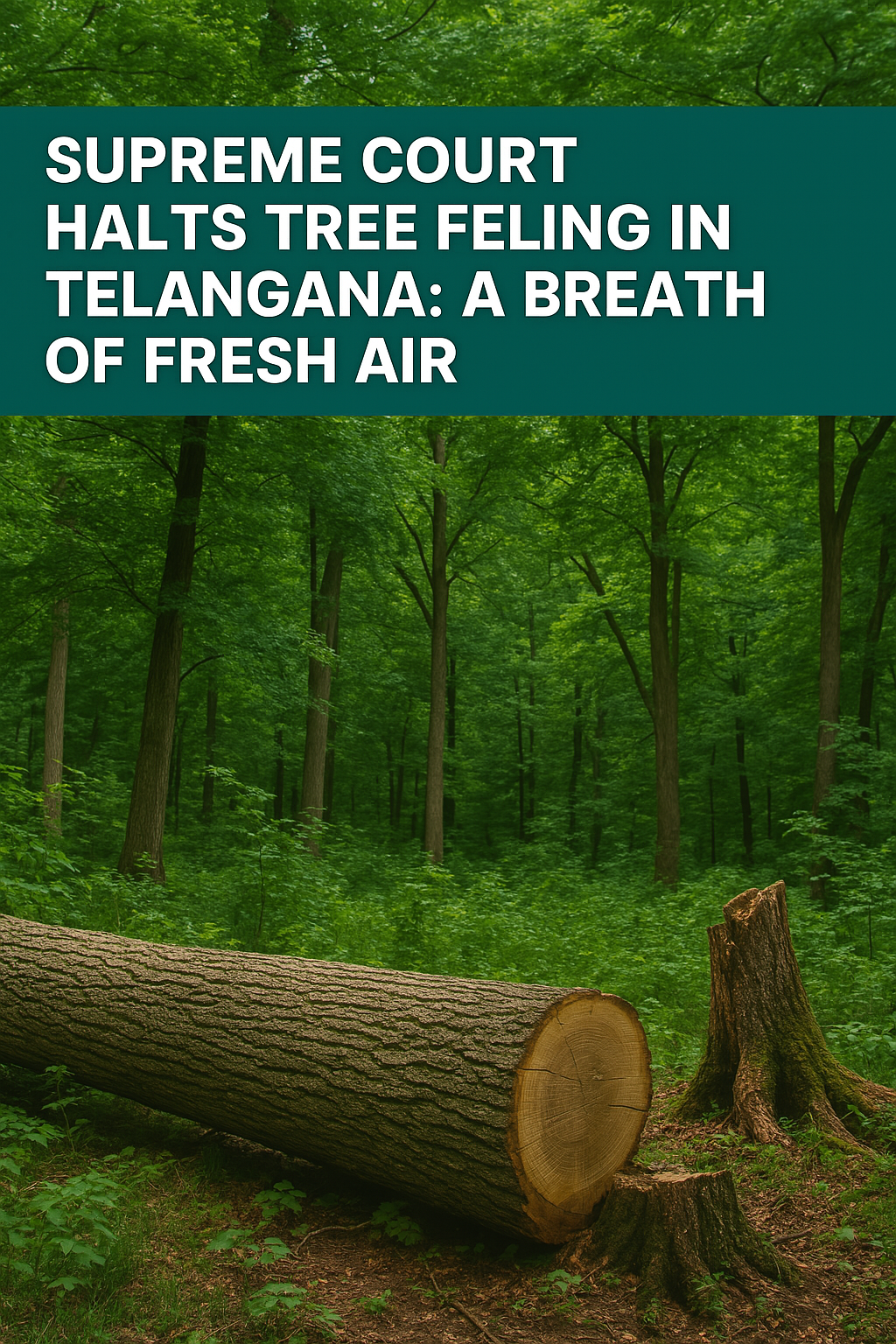Environmental laws at Ecuador
Ecuador has a robust set of environmental laws that reflect its commitment to environmental protection and sustainable development. Ecuador is known for its rich biodiversity, and its legal framework seeks to balance conservation with economic growth. Below is an overview of the key environmental laws and regulations in Ecuador:
1. Constitution of the Republic of Ecuador (2008)
Ecuador's Constitution is one of the most progressive in the world when it comes to environmental protection. The Constitution of 2008 recognizes the Rights of Nature in Chapter 7 (Article 71), granting ecosystems the right to exist, regenerate, and evolve. This groundbreaking provision provides legal standing for nature, allowing individuals and organizations to take legal action in defense of the environment.
The Constitution also guarantees the right to a healthy environment, ensuring that the state has the duty to protect and preserve the environment for future generations. It mandates that development should be sustainable, with a focus on protecting the environment and biodiversity.
2. Environmental Management Law (1999)
The Environmental Management Law (Law No. 37 of 1999) is one of Ecuador’s key environmental laws. It lays out the legal framework for environmental protection and defines the roles and responsibilities of the government, industries, and citizens in environmental conservation.
The law includes provisions for the Environmental Impact Assessment (EIA) process, which is required for major development projects that could have significant environmental impacts, such as construction projects, mining, and oil extraction.
The law also emphasizes the pollution control and sustainable management of natural resources.
3. Law on the Prevention and Integral Management of Waste (2010)
Ecuador’s Law on the Prevention and Integral Management of Waste (Law No. 2010) addresses the proper management of solid waste, promoting recycling and waste reduction. The law establishes the legal framework for dealing with municipal waste, hazardous waste, and industrial waste.
The law prioritizes waste minimization at the source and includes measures for sustainable waste disposal and recycling programs. It also imposes responsibility on producers for managing the waste generated by their products.
4. Biodiversity Law (2005)
The Biodiversity Law (Law No. 2005) focuses on the conservation and sustainable use of Ecuador’s biodiversity, which is recognized as one of the most biodiverse in the world. The law aims to protect species and ecosystems, regulate the use of genetic resources, and promote sustainable tourism.
It establishes Ecuador’s legal framework for the management of protected areas, including national parks, wildlife refuges, and forest reserves. The law also sets regulations for the conservation of endangered species and their habitats.
5. Law on the Use and Conservation of Water (2008)
The Law on the Use and Conservation of Water (Law No. 2008) regulates the management, protection, and sustainable use of Ecuador’s water resources. It aims to ensure equitable access to water, protect water quality, and prevent overexploitation of water resources.
The law establishes guidelines for water conservation and pollution control, particularly with regard to industrial, agricultural, and domestic water use. It also requires the development of integrated water management plans and regulates the allocation of water for various sectors.
6. Forest and Biodiversity Law (2001)
The Forest and Biodiversity Law (Law No. 2001) governs the management, conservation, and restoration of forests in Ecuador. The law focuses on reducing deforestation, protecting critical habitats, and promoting sustainable forest management practices.
It includes provisions for reforestation, the sustainable harvesting of timber, and the regulation of illegal logging. The law also supports community-based forest management and the protection of biodiversity in forested areas.
7. The Mining Law (2009)
The Mining Law (Law No. 2009) governs mining activities in Ecuador, setting the legal framework for the exploration and extraction of mineral resources. The law establishes the Environmental Impact Assessment (EIA) process for mining projects, ensuring that any potential environmental impacts are carefully considered before approval.
It includes provisions for sustainable mining practices, waste management, and the protection of water resources. The law also seeks to mitigate the negative environmental impacts of mining, such as deforestation, soil erosion, and water contamination.
8. The National System of Protected Areas (2000)
Ecuador has developed a National System of Protected Areas (SNAP), which is managed by the Ministry of Environment. The system includes various categories of protected areas, such as national parks, ecological reserves, and wildlife refuges, aimed at preserving the country’s diverse ecosystems and species.
The law ensures the sustainable management of these protected areas and promotes the participation of local communities in conservation efforts. Ecuador has designated a significant portion of its land as protected areas to conserve its rich biodiversity.
9. The Organic Code of Territorial Organization, Autonomy, and Decentralization (2010)
This Organic Code (COOTAD) provides guidelines for the territorial organization and governance of natural resources at the local and regional levels. The Code promotes sustainable development and environmental protection through the active participation of local communities, municipalities, and indigenous groups.
It establishes a legal framework for territorial planning, urbanization, and natural resource management that aligns with the principles of sustainable development.
10. The Environmental Code (2020)
Ecuador's Environmental Code (Code No. 2020) is a comprehensive framework that consolidates many of the country’s environmental regulations. The code includes provisions for environmental protection, sustainable resource management, and the enforcement of environmental laws.
The code also emphasizes the right to a healthy environment and sets penalties for violations of environmental laws, including illegal activities such as pollution, deforestation, and the illegal extraction of natural resources.
The law is part of Ecuador’s broader effort to ensure that its environmental policies are effective and aligned with international environmental standards.
11. The Green Incentives Law (2008)
The Green Incentives Law (Law No. 2008) encourages businesses and individuals to engage in environmentally friendly practices by offering tax incentives for sustainable activities. This includes incentives for businesses that invest in renewable energy, energy efficiency, pollution control, and sustainable agriculture.
The law promotes green technologies, carbon offsets, and the use of renewable resources to reduce the environmental impact of industrial and commercial activities.
12. The Free, Prior, and Informed Consent (FPIC) Law (2019)
Ecuador passed a law in 2019 requiring companies and the government to obtain the Free, Prior, and Informed Consent (FPIC) of indigenous peoples before proceeding with projects that may affect their territories or natural resources. This law is crucial in protecting the rights of indigenous communities and ensuring their active participation in decision-making processes related to the use of natural resources, such as mining, oil extraction, and hydroelectric projects.
13. International Commitments and Agreements
Ecuador is a signatory to several international agreements focused on environmental protection, including the Convention on Biological Diversity (CBD), the Paris Agreement on Climate Change, the Ramsar Convention on Wetlands, and the Convention on International Trade in Endangered Species of Wild Fauna and Flora (CITES).
The country is also involved in the Amazon Cooperation Treaty Organization (ACTO), a regional agreement focused on the sustainable development and environmental protection of the Amazon Basin.
14. Environmental Enforcement and Oversight
The Ministry of Environment is the primary governmental body responsible for enforcing environmental laws in Ecuador. It oversees the implementation of environmental policies, conducts inspections, and ensures compliance with environmental regulations.
Environmental Police (Cuerpo de Policía Ambiental) is responsible for investigating and responding to environmental crimes, such as illegal logging, pollution, and the illegal extraction of resources.
Conclusion
Ecuador's environmental legal framework is extensive and incorporates a range of laws aimed at protecting its rich biodiversity, ensuring the sustainable use of natural resources, and addressing critical issues such as climate change and pollution. The country’s groundbreaking Rights of Nature provision in its Constitution sets it apart globally, ensuring that ecosystems have legal standing. Additionally, Ecuador's commitment to sustainable development is reflected in its numerous laws promoting the conservation of ecosystems, water resources, and biodiversity, while also involving indigenous communities in decision-making processes related to natural resource management.




























0 comments